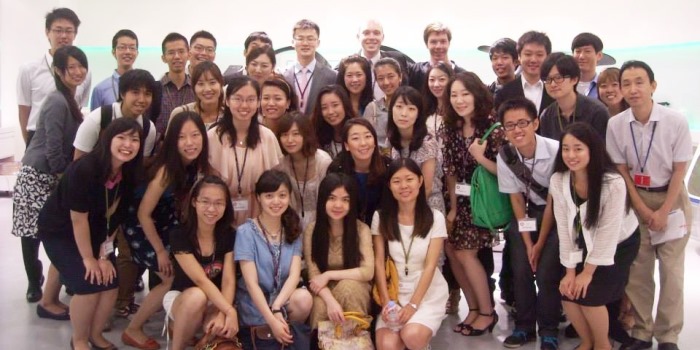Reconstruction and Recreation

- TOKYO exchange
- 2013年10月From: SEOUL
- Yu Ri Park

Streets in Tokyo have different modernity from those in other mega cities. Even the ones in less busy areas still contain neatness and orderliness at an impressive level. Like the old ones in Asakusa, for instance. But the most special experience was walking around the streets in Asakusa among many other places that I had visited during my short stay in Tokyo, where I sensed the earnestness of the Japanese people who are devoted to maintain the beauty of the present and to constantly recreate the essence of the past.
When we visited Taito Ward Community Center on July 31st, I was able to hear about the city planning or “Machi Zukuri (街づくり)” in Taito area. A civil officer presented on the local government’s systematic initiatives in city planning. Then a local businessman who runs a ramen place told us his story of bringing a remarkable change to his community, Denboin dori shopping street; while listening to them I learned about how the local government and people worked together to make a culturally rich and more sustainable city. Walking around the Denboin shopping street, all of us were looking for the Edo-style street signs and wall paintings that participants of the city planning project placed here and there. The street was full of sense of humor and love for the tradition of the community which made the shopping street more humane and one of a kind.
What makes Denboin dori special is not based on meticulous reconstruction. Some of the signs and wall paintings were inspired from relics of the past and recreated in ways that are easier to understand for contemporary people. Yet such modifications and incorporating newer elements do not distract visitors’ experience in this “historical” site; rather, they add value to the visitors’ experience by making them laugh and stimulating their imaginations. The essence of the past is delivered more strongly by recreation, rather than reconstruction.
The theme of reconstruction kept hitting me during my visit in Tokyo, perhaps because I have been interested in the impact of Prime Minister Abe’s new economic policies and the current optimism in revitalizing the Japanese economy through profound measures of restructuring. Since repeating the history in the exact same manner is impossible, Japan needs to add creative elements in order to regain the essence of its past, the remarkable growth and success. What would that be? When we visited Teijin Company on the field trip day, I asked the lecturer, Mr. Ono (CSR Division of Teijin Company) for an answer from the perspective of the industry. All of us were surprised at his candor, when he commented that in fact his company is suffering revenue deficit at the moment despite its strong technological know-how. He said that hopefully the economic restructuring along with the financial policies that the Prime Minister is directing would have positive impacts and meanwhile, Teijin is striving to invest in future technologies such as the green chemistry, medical devices, and material developments. Listening to the firm optimism of the Japanese businessman, I thought that Japanese industry is also going through a time of recreation that may lead it to another story similar to that of Denboin dori.

